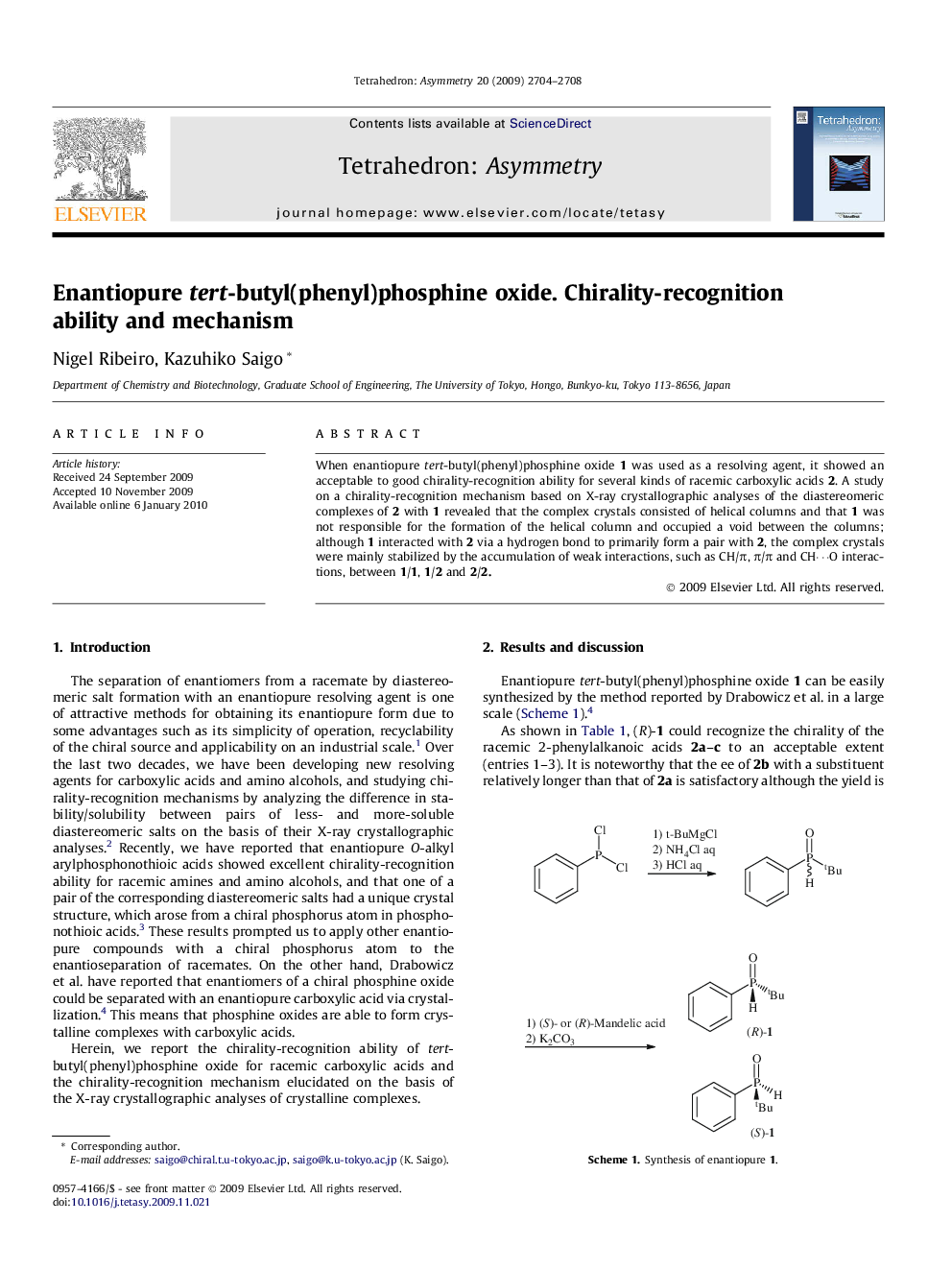| Article ID | Journal | Published Year | Pages | File Type |
|---|---|---|---|---|
| 1349470 | Tetrahedron: Asymmetry | 2009 | 5 Pages |
When enantiopure tert-butyl(phenyl)phosphine oxide 1 was used as a resolving agent, it showed an acceptable to good chirality-recognition ability for several kinds of racemic carboxylic acids 2. A study on a chirality-recognition mechanism based on X-ray crystallographic analyses of the diastereomeric complexes of 2 with 1 revealed that the complex crystals consisted of helical columns and that 1 was not responsible for the formation of the helical column and occupied a void between the columns; although 1 interacted with 2 via a hydrogen bond to primarily form a pair with 2, the complex crystals were mainly stabilized by the accumulation of weak interactions, such as CH/π, π/π and CH⋯O interactions, between 1/1, 1/2 and 2/2.
Graphical abstractFigure optionsDownload full-size imageDownload as PowerPoint slide
